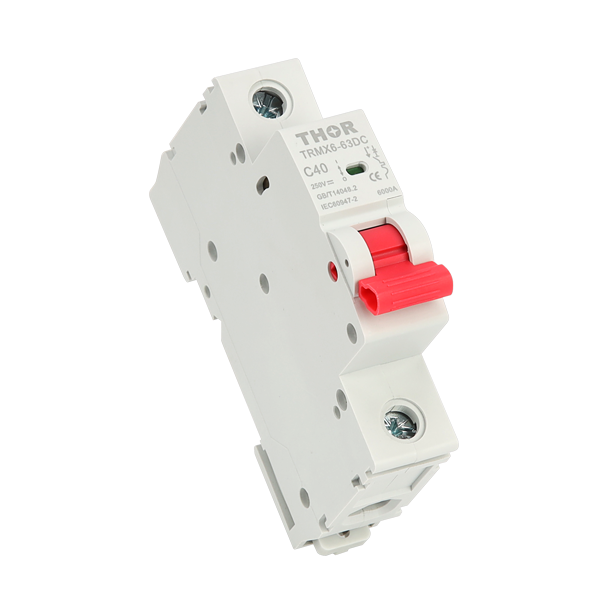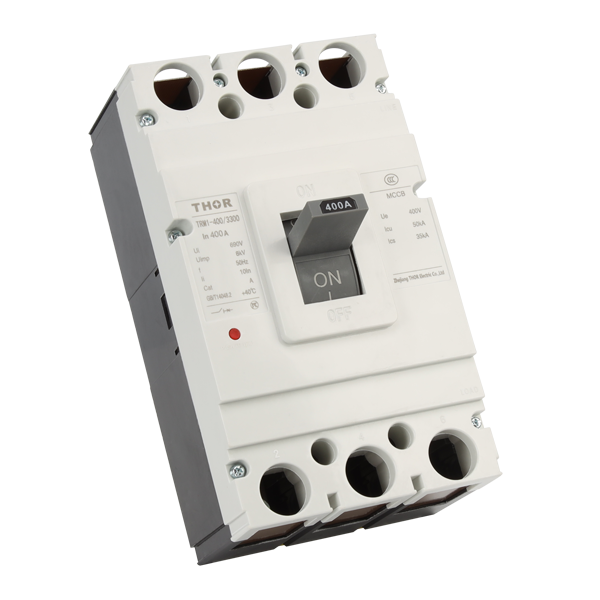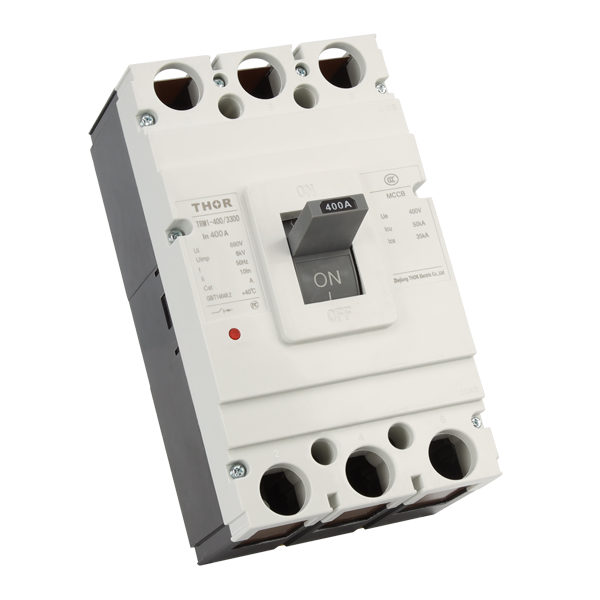To reset a circuit breaker, you need to first identify the tripped circuit breaker, turn off the related equipment, find the main electrical panel, switch the circuit breaker to the "OFF" position, wait a few seconds and then switch it to the "ON" position, and finally verify whether the reset is successful.
Identify the Tripped Circuit Breaker
According to statistics from the National Fire Protection Association (NFPA), home fires caused by electrical faults account for about 13% of total fire accidents each year, of which about 30% of fire accidents are caused by circuit overloads or short circuits.
The rated current of household circuit breakers is usually 15 amps to 30 amps. The starting current of a 1500-watt air conditioner is about 8 amps, and the current when it runs for a long time may be close to 10 amps. If multiple high-power appliances are turned on at the same time, such as electric water heaters (power is about 3000 watts) and microwave ovens (power is about 1200 watts), the total current may exceed 25 amps and cause the circuit breaker to trip.
According to the National Electrical Manufacturers Association (NEMA), about 40% of home users fail to check the status of circuit breakers in time each year, causing the equipment to not operate normally.
According to the National Electrical Engineering Association, electrical systems over 20 years old are five times more likely to fail than new systems. In some homes that have been used for more than 15 years, the contacts of the circuit breakers may be worn due to long-term current shocks, resulting in ineffective reset when tripping.
According to a survey on electrical equipment failures, 15% to 20% of electrical equipment failures are caused by current overload. A refrigerator that has been used for more than 10 years may instantly draw high current when it starts, triggering the circuit breaker to trip.
The starting current of a modern smart air conditioner can reach 15 amps, while the current may drop to 6 amps during continuous operation.
According to the International Association of Electrical Equipment Manufacturers, the global smart home market is expected to reach $135 billion in 2026.
The starting current of an air conditioner may be three times its rated current, and when the appliance is started and stopped frequently, the current fluctuation may cause the circuit breaker to trip.
According to statistics from the Chinese Electrical Engineering Society, the probability of failure of wires that have not been repaired for more than 10 years is as high as 30%.
The average power consumption of a data center is about 200 watts to 300 watts per square meter.
Modern electrical design specifications recommend that the total load of the circuit should not exceed 80% of the rated current of the circuit breaker. The maximum load of a 15-amp circuit should be limited to 12 amps.
For more details about insurance benefits of lightning rods, you can read here.

Turn Off All Devices on the Affected Circuit
According to the National Fire Protection Association (NFPA), fires caused by electrical overloads account for about 15% of all household fires.
In a home environment, a standard 15-amp circuit can carry a maximum power of 3,600 watts (15 amps × 240 volts). If multiple high-power devices are connected to this circuit at the same time, such as a 1,500-watt electric kettle, a 2,000-watt electric heater, and a 1,200-watt microwave oven, the total power may reach 5,700 watts, exceeding the load capacity of the circuit, thereby triggering the circuit breaker to trip.
Modern air conditioners can draw three times as much current when they start up, which means that before resetting the circuit, the air conditioner should be turned off to avoid tripping again.
According to research by the Institute of Electrical Engineering, about 30% of circuit trips are caused by internal short circuits or failures in the appliance.
According to market research, the global smart home market is expected to reach $135 billion in 2025.
A 30-amp circuit can carry a maximum power of 7,200 watts, and if the mall's lighting system and air conditioning are running at the same time, the current load may reach 5,000 watts to 7,000 watts.
According to the National Electrical Equipment Association, the failure rate of appliances over 10 years is 15% to 20%.
According to electrical design specifications, the load of the circuit should be controlled within 80% of the rated current. If a circuit is rated for 20 amps, the actual load should not exceed 16 amps.
When resetting the circuit, pay special attention to the starting current of the appliance, which is usually 3 to 5 times the current when the device is running. An air conditioner may have a starting current of 30 amps, while it only draws 10 amps when it is operating normally.
Locate the Main Electrical Panel
According to the U.S. Department of Energy (DOE), approximately 30% of electrical failures each year are related to improper management and maintenance of the main electrical panel. Most residential electrical panels have a capacity of 100 to 200 amps, while in some large commercial buildings, the electrical panels can be rated at 400 to 600 amps.
For an average home, the main electrical panel has a current capacity of about 100 amps, and each circuit is typically rated for 15 to 20 amps. A standard air conditioner typically has a power of 1500 to 2000 watts, while an electric oven can have a power of up to 3000 watts.
According to the National Electrical Code (NEC), the main electrical panel should be installed about 1.5 meters above the ground. In fact, more than 40% of homes do not install the panel location according to the regulations.
In the past five years, electrical fires caused by aging and poor maintenance of electrical panels accounted for 12% of all electrical fires. The service life of the main electrical panel is generally 20 to 30 years.
In a 10,000 square meter shopping mall, the main electrical panel is usually 400 amps and is distributed into multiple zone panels. The load of each zone may be as high as 50 kWh.
According to statistics from market research firm Statista, the market demand for electrical panels in the global construction industry has an average annual growth rate of about 6.5%. In the United States, about 25% of new homes have begun to install electrical panels with smart monitoring functions, and this proportion is expected to grow to 50% in the next five years.
When installing an electrical panel, the cost of professional electrical installation services is usually RMB 1,000 to 5,000. The cost of regular inspections is generally RMB 300 to 800 each time. According to expert advice, a comprehensive inspection of the electrical panel should be carried out every two years.
Each electrical panel is equipped with 3 to 4 circuit breakers, each of which is responsible for power management of different circuits. In some complex commercial buildings, the number of circuit breakers in the electrical panel may reach more than 10. In an electrical failure, about 60% of the accidents are caused by the tripping of a circuit breaker, while the remaining 40% of the failures usually involve problems with the electrical equipment itself.

Switch the Circuit Breaker to the "OFF" Position
According to the American Institute of Electrical Engineers (IEEE), about 70% of home electrical problems are caused by circuit breaker tripping and overload. The standard electrical panel of many homes usually includes circuit breakers rated at 15 amps or 20 amps. For a circuit breaker rated at 20 amps, it can support a load of up to 4,800 watts, while a 15-amp circuit breaker supports a load of up to 3,600 watts.
When switching the circuit breaker to the "OFF" position, the operation time is about 2 to 3 seconds. According to professional research, the cooling time after the circuit breaker trips is usually 5 to 10 minutes, and the temperature of the circuit will drop from 90°C to about 50°C.
In some commercial or industrial environments with large electrical loads, the rated current of the circuit breaker may be as high as 100 amps. An electrical panel in a building may have multiple 50-amp circuit breakers to control different load devices, and usually reaches 80% load utilization during peak hours such as 8 am to 10 am.
If the air conditioner, microwave, and dryer in the home are working at the same time, it may cause the overload of the 20-amp circuit breaker to trip. In this case, wait 10 to 15 minutes after switching the circuit breaker to the "OFF" position.
According to a survey report by the National Electrical Manufacturers Association (NEMA), about 30% of the electrical panels in old buildings have poor contact or excessive aging problems. To improve the safety of the system, it is recommended to check the electrical panel every 5 to 10 years and replace the circuit breaker as needed.
If a 3-kilowatt electric water heater frequently trips during operation, there may be a problem with the electric heating element. After each inspection, the appliance needs to be suspended for at least 30 minutes to diagnose whether there is an overload or short circuit.
According to data provided by the National Electrical Safety Institute (ESFI), nearly 50% of electrical fires originate from overloaded circuits. 30% of households may not conduct electrical inspections in time due to circuit overload.
Wait a Few Seconds
According to the Electrical Safety Institute (ESFI), about 28% of electrical accidents are related to improper circuit breaker resetting.
According to the International Institute of Electrical Engineers (IEEE), a 10-second waiting time has been proven to effectively reduce re-tripping caused by instantaneous overload. If it is a high-power device such as an air conditioner, the current may be as high as 4 times its rated power for a short time when it starts. Waiting for 10 seconds can effectively avoid the current peak impact.
According to the standards of the National Electrical Code (NEC) of the United States, automatic reset circuit breakers usually complete self-tests between 5 and 30 seconds. When facing automatic reset circuit breakers, the waiting time should be extended to 20 to 30 seconds.
According to a survey by the US Department of Labor, the life of electrical equipment in high temperature environments will be shortened by about 20%, especially in garages or high-temperature factory environments above 40°C. In these special environments, the waiting time of the circuit should be increased to more than 15 seconds.
When resetting the circuit breaker, if the surrounding temperature is low, such as a cold environment below 0°C, the electrical system may be at risk of short circuit due to the low temperature. Waiting for more than 15 seconds can ensure that the current in the electrical system is steadily restored.
According to the National Fire Administration, about 22% of fires are caused by electrical faults, and 40% of electrical faults are caused by overcurrent recurrence due to improper waiting after the circuit breaker trips. For household circuits, the waiting time should not be less than 10 seconds, especially in circuits with electrical power exceeding 2000 watts.
Industrial equipment, such as 50-kilowatt motors, require more time when restarting to ensure that the current load is gradually and smoothly restored. For such high-power equipment, it is recommended to wait for 15 to 20 seconds.
In some old buildings, the contact of electrical equipment may have loosened, and the waiting time should be extended to 20 to 30 seconds. For old houses over 30 years old, the electrical system often takes longer.
For details about installation costs, you can read more here.

Flip the Breaker to the "ON" Position
According to statistics from the Institute of Electrical Engineering (IEEE), about 15% of household electrical faults each year are caused by the circuit breaker not being fully restored.
In a standard 15-ampere household circuit, the load should usually be controlled within 12 amperes. For example, the starting current of a household air conditioner is usually 3 to 5 times the normal operating current, and the starting current is as high as 45 amperes.
When a 5,000-watt electric water heater is started, its instantaneous current may reach 60 amperes, exceeding the standard load of a household circuit. According to US electrical standards, the instantaneous load of electrical equipment at startup should not exceed 150% of its rated current.
According to a report by the Home Energy Management Association (HEM), if high-power appliances are started synchronously with other devices when turned on, the probability of circuit failure is three times that of turning them on separately.
In a 50-kilowatt motor system, its starting current is usually about 6 times the rated current. The Institute of Electrical Engineering pointed out that about 60% of electrical faults in industrial systems are caused by improper load control when the circuit breaker is restored.
Regarding the operation time of switching the circuit breaker, the ideal recovery time is 5 to 10 seconds. In fact, when the circuit breaker is restored to "ON", it should be able to complete the circuit reconnection within 2 seconds. If it is not restored for more than 5 seconds, it may indicate that there is a fault in the circuit system.
According to the National Electrical Code (NEC), if the voltage fluctuation exceeds 10%, the circuit breaker will automatically trip due to overvoltage.
According to research data from the US Department of Labor, 30% of electrical fires are caused by electrical short circuits or overloads.
According to a report by the American Electrical Maintenance Association, about 20% of electrical faults are caused by poor contact or aging of wires.
Based on the average service life of electrical equipment, most home circuit systems may have problems due to aging equipment after 10 to 15 years of use.
Verify the Reset
Statistics show that more than 25% of electrical accidents are caused by incomplete circuit breaker reset or incomplete circuit restoration.
Home circuits are usually equipped with 15-amp or 20-amp circuit breakers. Assuming you are restoring a 15-amp circuit, the current should remain between 10-15 amps after the reset. If the current exceeds 120% of the rated value (i.e., more than 18 amps), it means that the circuit may still have problems. According to the Institute of Electrical Engineers (IEEE), current overload can increase the rate of equipment damage by more than 50%.
When using home appliances, if the circuit returns to normal after the reset, the startup time of the device is usually controlled within 1-2 seconds. Take an 800-watt microwave oven as an example. Under normal circumstances, its power should be around 800 watts after startup. If the startup delay exceeds 3 seconds, or the device cannot start normally, it may mean that the reset process has not been completed thoroughly. Research by the National Electrical Association shows that about 15% of electrical appliance failures are related to unstable power supply.
For a 1200-watt electric kettle, the designed normal operating temperature should be between 50℃ and 70℃. If the kettle temperature exceeds 80℃ during use, it means that the current is unstable after the circuit is reset. According to the National Fire Protection Association, fires caused by overheating of electrical appliances account for about 25% of the total number of household fires each year.
When restarting a 50-kilowatt industrial motor, the current fluctuation should be controlled between 90% and 110% of the rated value. According to statistics on the failure rate of industrial electrical systems worldwide, about 10% of motor failures are related to circuit instability.
According to US electrical standards, about 5% of circuit breakers fail to work properly when reset due to long-term use or quality problems. In particular, the probability of reset failure will increase for old circuit breakers that have been used for more than 10 years.
If the load imbalance of a household three-phase power system exceeds 20%, the risk of circuit short circuit or overload will be greatly increased. According to a survey by the American Electrical Safety Association, about 15% of household electrical failures are related to load imbalance.
For household 220V circuit systems, voltage fluctuations should be controlled within ±5%. If the voltage fluctuation exceeds 11V (i.e., lower than 209V or higher than 231V), it is necessary to check whether there is a problem with the circuit. According to electrical equipment maintenance research, if the voltage fluctuation is large, the service life of the appliance will be shortened by 20%-30%.
The electrical inspection cycle is usually recommended to be once every 2 years.
For household electricity, digital meters usually have a measurement accuracy of less than 0.1%. Statistics show that nearly 30% of electrical systems fail or fire accidents due to neglect of digital meter monitoring.
